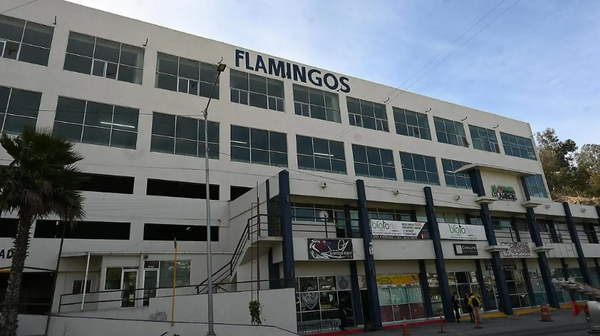
In 1978, Iron Maiden were far from the world-conquering Beast we know them as today. Before their countless blockbuster tours, before The Number Of The Beast, before the New Wave Of British Heavy Metal, Steve Harris and the boys were struggling London lads weathering lineup changes and desperate to make a name for themselves. They took any gig they could, often slept in their van and worked day jobs for cash. That was until The Soundhouse Tapes got them signed to EMI and gave the band their first step towards megastardom.
Although bassist Steve had formed Maiden just three years prior, by late 1978, they were a near-totally different band to what they started as. ’Arry, as he was known in the East End, cycled through a host of musicians in the capital’s fledgling rock scene before settling on his first truly stable lineup… kind of. Vocalist Paul Di’Anno, guitarist Dave Murray and drummer Doug Sampson had formed the new nucleus of the band alongside Steve, their camaraderie sharpened by playing a litany of DIY concerts up and down the country. (The second guitarist spot was hopping between numerous people but, hey, it was still the least volatile the band had ever been.)
“I know, one weekend, we went up to play in Aberdeen one night,” Steve remembered in 2005 DVD The History Of Iron Maiden, Part 1. “We drove up on the Friday, stayed the night in [north English town] Berwick-Upon-Tweed, played the gig the next night, then drove across the country and played Blackpool on the Sunday night. Then, straight back home and back to work the following morning. We did that sort of stuff quite a lot.”
Despite generating a bit of a buzz for being a top-notch live act, Maiden wanted to strengthen their reputation even further by making their first studio recording. The band chose Spaceward Studios up in Cambridge. Despite the space being 60 miles from their hometown, they’d heard a demo ex-singer Dennis Wilcock had made there, and they were impressed with the results.
Money was tight, so Maiden recorded what became Soundhouse… on December 30 and 31, 1978. Steve later explained, “The only way we could afford it at the time was to go on New Year’s Eve, because no one else wanted to then.” Plus, while in Cambridge, the band didn’t even have the cash for a hotel, forcing them to sleep on a stranger’s floor.
“We were gonna kip in the back of the van [but], because it was snowing, it was so bloody cold,” said Steve. “We were in this pub and Paul pulled this young nurse. She invited us all back to kip on her floor. She only had a bedsit, but we were very grateful.”
Ultimately, four songs came from the Spaceward sessions: future debut album cuts Prowler, Strange World and Iron Maiden, plus Invasion, which eventually evolved into Number… opener Invaders. As much as Maiden’s two later albums with Paul would boast plenty of punk rock verve, these Soundhouse… recordings epitomised the band’s early rawness. The slicing guitar leads clashed head-on with the rhythm playing’s loose-sounding chords, while the vocals are more gravelly than on any other Maiden release. That imperfect, aggro sound was sealed when Maiden weren’t even allowed to take the masters home and give them a sonic scrub.
“We wanted to take the two-inch tape home with us so we could embellish it and add more,” Dave remembered, “but we couldn’t afford to buy the tape.”
“It was only £50, but we’d used all our money,” Steve added. “The next week, we went back to buy the tape, and the buggers had gone over it. So, all we had was the tape, and that’s what we ended up releasing Soundhouse… as.”

Although Maiden only had four unrefined songs on their hands, that was all they needed to prove their musical prowess. The band presented the demo first to Neal Kay, DJ at London rock nightclub the Bandwagon Soundhouse. Neal was so impressed that he put Prowler at the top of the club’s resident heavy metal chart, earning Maiden the attention of contemporary music magazines like Sounds.
“Me and Paul went down [to Bandwagon] one night and waited to see what’d happen when it came on,” Steve remembered. “When they played Prowler, the place went berserk. People were throwing serious shapes, with the air guitar and all this business. We were going, ‘What the hell’s going on here?’ Suddenly, this very real thing was happening.”
From there, it was all a fast but logical progression. Rod Smallwood got a hold of the demo and heard so much potential that he signed on to be Maiden’s manager – a position he still holds to this day. Rod used the songs to negotiate a record deal with EMI, while Maiden themselves self-released Soundhouse… (albeit without Strange World) as their debut EP in November 1979, naming it after the club that had so heavily endorsed their music. Only 5,000 copies were ever printed, turning the EP into a massively sought-after collector’s item once the band truly blew up.
As a result of the juggernaut Maiden became, and the instrumental role it played in getting their ball rolling, Soundhouse… is now one of the great artefacts of heavy metal. Sure, it’s raw, unfinished and can’t hold a candle to the excellence of Powerslave or Seventh Son Of A Seventh Son. But, there’s a strong chance Maiden may never have got out the starting gate if they hadn’t spent their last available pennies to make this stunning first impression.







